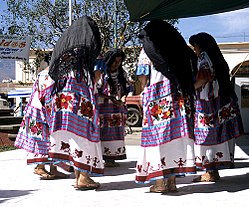
Salvinorin A is the main active psychotropic molecule in Salvia divinorum. Salvinorin A is considered a dissociative hallucinogen.

Entheogens are psychedelic drugs—and sometimes certain other psychoactive substances—used for engendering spiritual development or otherwise in sacred contexts. They have been used in various ways, e.g., as part of established religious rituals or as aids for personal spiritual development. Anthropological study has established that entheogens are used for religious, magical, shamanic, or spiritual purposes in many parts of the world. Entheogens have traditionally been used to supplement many diverse practices geared towards achieving transcendence, including healing, divination, meditation, yoga, sensory deprivation, asceticism, prayer, trance, rituals, chanting, imitation of sounds, hymns like peyote songs, drumming, and ecstatic dance. The psychedelic experience is often compared to non-ordinary forms of consciousness such as those experienced in meditation, near-death experiences, and mystical experiences. Ego dissolution is often described as a key feature of the psychedelic experience.

Robert Gordon Wasson was an American author, ethnomycologist, and a Vice President for Public Relations at J.P. Morgan & Co.
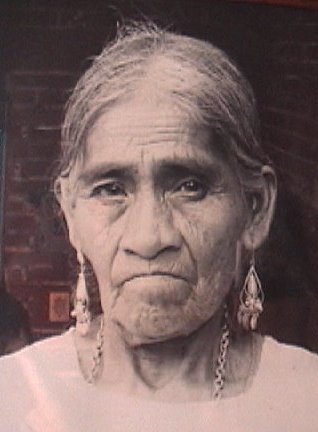
María Sabina Magdalena García was a Mazatec sabia, shaman and poet who lived in Huautla de Jiménez, a town in the Sierra Mazateca area of the Mexican state of Oaxaca in southern Mexico. Her healing sacred mushroom ceremonies, called veladas, were based on the use of psilocybin mushrooms, particularly Psilocybe caerulescens, a sacred mushroom important to the Mazatecs. María Sabina's veladas contributed to the popularization of indigenous Mexican ritual use of entheogenic mushrooms among westerners, though this was not her intent.

The Mazatecan languages are a group of closely related indigenous languages spoken by some 200,000 people in the area known as the Sierra Mazateca, which is in the northern part of the state of Oaxaca in southern Mexico, as well as in adjacent areas of the states of Puebla and Veracruz.
The Mazatec Shamans are known for their ritual use of psilocybin mushrooms, psychoactive morning glory seeds, and Salvia divinorum. María Sabina was one of the best known of the Mazatec Shamans. Her healing psilocybin mushroom ceremonies, called veladas, contributed to the popularization of indigenous Mexican ritual use of entheogenic mushrooms among westerners.

The ancient Aztecs employed a variety of entheogenic plants and animals within their society. The various species have been identified through their depiction on murals, vases, and other objects.
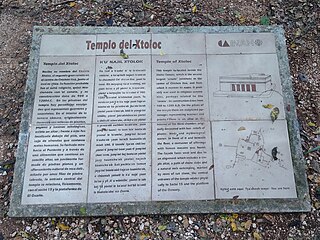
The Constitution of Mexico does not declare an official language; however, Spanish is the de facto national language spoken by over 99% of the population making it the largest Spanish speaking country in the world. Due to the cultural influence of the United States, American English is widely understood, especially in border states and tourist regions, with a hybridization of Spanglish spoken. The government also recognizes 63 indigenous languages spoken in their communities out of respect, including Nahuatl, Mayan, Mixtec, etc.

Indigenous peoples of Mexico, Native Mexicans or Mexican Native Americans, are those who are part of communities that trace their roots back to populations and communities that existed in what is now Mexico before the arrival of Europeans.

The Cora are an indigenous ethnic group of North Western Mexico which live in the municipality El Nayar, Rosamorada, Ruiz, Tepic, in the Mexican state of Nayarit, Mezquital in Durango and in a few settlements in the neighboring state of Jalisco. They call themselves náayerite, whence the name of the present day Mexican state of Nayarit. They reside within a series of comunidades indígenas and ejidos. The 2000 Mexican census reported that there were 24,390 people who were members of Cora-speaking households, these being defined as households where at least one parent or elder claims to speak the Cora language. Of these 24 thousand, 67 percent (16,357) were reported to speak Cora, 17 percent were nonspeakers, and the remaining 16 percent were unspecified with regard to their language.

Tlapanec, or Meꞌphaa, is an indigenous Mexican language spoken by more than 98,000 Tlapanec people in the state of Guerrero. Like other Oto-Manguean languages, it is tonal and has complex inflectional morphology. The ethnic group themselves refer to their ethnic identity and language as Me̱ꞌpha̱a̱.
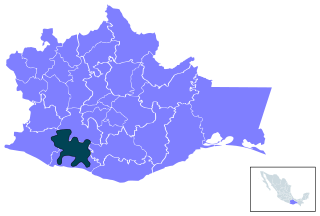
Chatino is a group of indigenous Mesoamerican languages. These languages are a branch of the Zapotecan family within the Oto-Manguean language family. They are natively spoken by 45,000 Chatino people, whose communities are located in the southern portion of the Mexican state of Oaxaca.

Mary Brandenburg is an American politician in the state of Florida. She was a representative in the Florida House of Representatives between 2002 and 2010.
The National Institute of Indigenous Peoples is a decentralized agency of the Mexican Federal Public Administration. It was established on December 4, 2018, though the earliest Mexican government agency for indigenous matters was created in 1948. It is headquartered in Mexico City and headed by Adelfo Regino Montes.
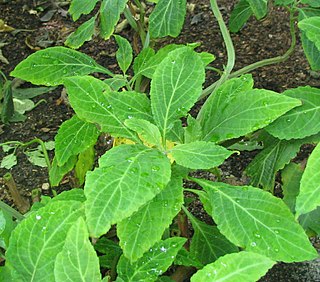
Salvia divinorum is a plant species with transient psychoactive properties when its leaves, or extracts made from the leaves, are administered by smoking, chewing, or drinking. The leaves contain the potent compound salvinorin A and can induce a dissociative state and hallucinations.
Velada is the name of the healing vigils carried out by Mazatec curanderos. The rituals involved the use of psilocybin or Salvia divinorum to commune with God and experience enlightenment.

Jean Bassett Johnson was an American anthropologist and linguist who conducted field studies in Mexico during the 1930s and early 1940s. A doctoral candidate at the University of California, Berkeley, he was a student of Alfred Kroeber and Robert Lowie.

The Indigenous people of Oaxaca are descendants of the inhabitants of what is now the state of Oaxaca, Mexico, who were present before the Spanish invasion. Several cultures flourished in the ancient region of Oaxaca from as far back as 2000 BC, of whom the Zapotecs and Mixtecs were perhaps the most advanced, with complex social organization and sophisticated arts.
Entheogenic drugs have been used by various groups for thousands of years. There are numerous historical reports as well as modern, contemporary reports of indigenous groups using entheogens, chemical substances used in a religious, shamanic, or spiritual context.
